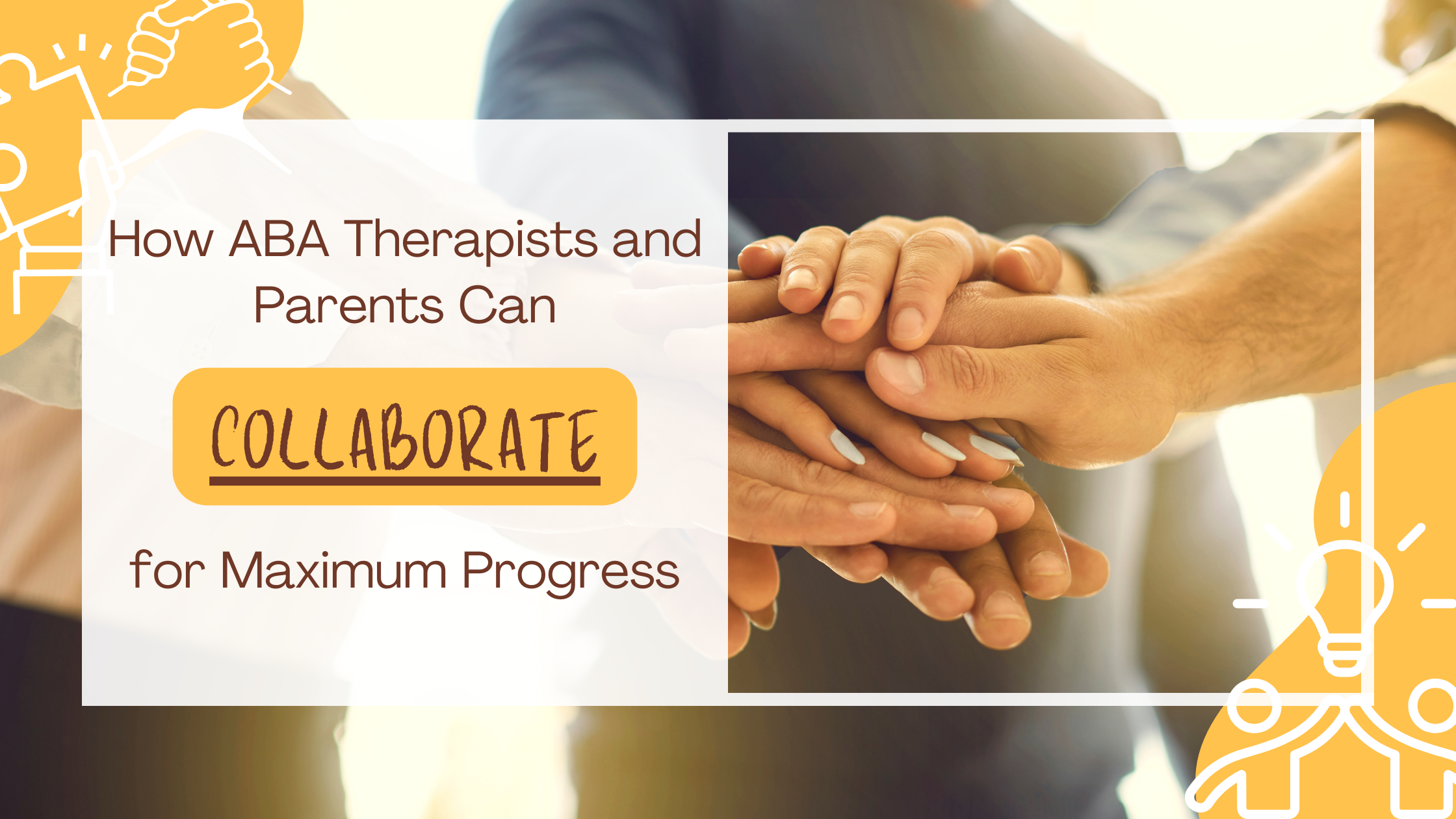How ABA Therapists and Parents Can Collaborate for Maximum Progress
January 9, 2025

When it comes to Applied Behavior Analysis (ABA), the saying “teamwork makes the dream work” couldn’t be more accurate. ABA therapy thrives on collaboration, and one of the most impactful partnerships is between therapists and parents. By working together, therapists and families can create an environment where children feel supported and are set up for success both during therapy sessions and in everyday life. Here’s how we can build a strong partnership to achieve maximum progress.
Why Collaboration Matters
ABA therapy doesn’t happen in a vacuum. While therapists bring specialized training and experience, parents bring invaluable insights into their child’s personality, preferences, and daily routines. Combining these perspectives ensures interventions are not only effective but also meaningful and practical for the child’s real-world experiences.
Collaboration also ensures consistency, which is critical for behavior change. When therapists and parents are aligned, children receive the same supportive messages and strategies across all settings—therapy sessions, home, school, and beyond.
Tips for Building a Strong Partnership
Here are some actionable ways parents and ABA therapists can collaborate to maximize progress:
1. Establish Open Communication
Effective communication is the foundation of any strong partnership. Therapists and parents should:
- Set expectations: Discuss therapy goals, timelines, and what progress might look like.
- Share updates: Therapists can provide session summaries, while parents can share observations from home or school.
- Ask questions: Don’t hesitate to ask for clarification or offer input on strategies. Honest dialogue fosters mutual understanding.
2. Align on Goals
Therapy goals should reflect both the child’s needs and the family’s priorities. For example:
- If a child struggles with transitions, the goal might focus on reducing frustration during daily routines.
- If parents want their child to engage more socially, the therapist can incorporate social skills into sessions. Collaboration ensures goals are meaningful and achievable for everyone involved.
3. Participate in Sessions
Whenever possible, parents should observe or join therapy sessions. This:
- Provides an opportunity to learn strategies firsthand.
- Helps therapists gain a deeper understanding of the family’s dynamics.
- Builds confidence for parents to implement techniques outside of therapy.
4. Practice at Home
ABA doesn’t stop when the therapist leaves. Parents can:
- Use the same reinforcement strategies therapists use.
- Incorporate therapy goals into everyday activities, like practicing communication during meals or turn-taking during playtime.
- Track progress or challenges to share with the therapist during follow-ups.
5. Celebrate Successes Together
Progress in ABA is often incremental, and celebrating small wins can be incredibly motivating. Therapists and parents should:
- Acknowledge milestones, no matter how small.
- Share successes—did your child try a new food or complete a task independently? Let the team know!
- Use positive reinforcement for both the child and the team’s efforts.
Common Challenges and How to Overcome Them
Every partnership has its hurdles. Here are a few common challenges and tips for navigating them:
- Different Perspectives: Sometimes, therapists and parents may have different ideas about priorities. Address this by keeping the child’s well-being at the center of all decisions and finding compromises that work for everyone.
- Time Constraints: Busy schedules can make collaboration difficult. Set up regular check-ins via email, phone, or brief in-person meetings to stay connected.
- Inconsistency: If techniques aren’t being followed consistently across environments, revisit strategies together to ensure they’re manageable and sustainable.
The Benefits of Collaboration
When ABA therapists and parents work hand-in-hand, the impact on the child’s progress can be profound:
- Faster Skill Development: Consistency accelerates learning and behavior change.
- Greater Generalization: Skills learned in therapy transfer more easily to everyday life.
- Increased Family Confidence: Parents feel empowered to support their child’s growth.
- Stronger Relationships: Collaboration fosters trust and mutual respect, creating a positive experience for everyone involved.
Let’s Build Progress Together
ABA therapy is most effective when it’s a team effort. By combining the expertise of therapists with the deep understanding parents have of their children, we can create a powerful support system that drives meaningful, lasting progress. Let’s keep the lines of communication open, align on goals, and celebrate every step forward—because when we work together, amazing things happen.
